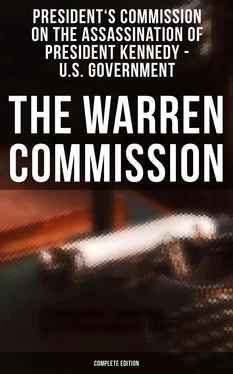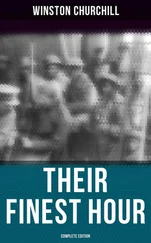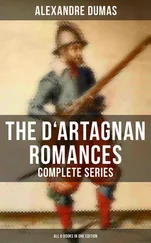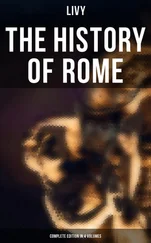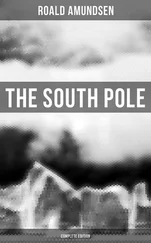I want you to confirm this. And is in the handwriting of your brother, Lee Harvey Oswald.
And except for notations of dates which appear thereon or may appear thereon in your handwriting, they are in the same condition now as when you received them?
Mr. Oswald. That is correct.
Mr. Jenner. Now, I wish you would—I want to exhibit to you the postcard dated April 10, 1962, which is Commission Exhibit No. 321.
Mr. Dulles. As I understand it, these letters have not yet been formally introduced in evidence.
Mr. Jenner. They have not, sir.
Mr. Dulles. Very well.
I might add, Mr. McKenzie, that, of course, one does not know whether those letters were opened by the authorities in the Soviet Union before being forwarded. I think that ought to be on the record.
Mr. McKenzie. Yes, sir.
Mr. Jenner. Commission Exhibit No. 321 I now hand you, Mr. Oswald. There is a date appearing thereon which reads, according to my interpretation 10—and then I cannot quite decipher it.
Would you look at the original, please?
Mr. Dulles. The European system of marking is different from the American system.
Mr. Jenner. That is what I seek to bring out, sir.
Do you now have the original before you?
Mr. Oswald. Yes, sir.
Mr. Jenner. Would you read the figures to which I point? The first is 10?
Mr. Oswald. 10/4/62.
Mr. Jenner. Indicating what date?
Mr. Oswald. April 10, 1962, in accordance with the European system of dating.
Mr. Jenner. Of putting the day first, the month second, and the year last?
Mr. Oswald. That is correct.
Mr. Dulles. Do you recall whether these letters were opened by cutting or opened by unsealing?
Mr. Oswald. I believe without exception, sir, looking at the originals, that they were opened by unsealing, rather than cutting.
Mr. Dulles. I was asking because it is sometimes possible, by modern methods, to determine whether a letter has been opened and resealed, and if the letter is cut, that can be done.
If the letter has been torn open where the seal is, you cannot do anything with it. You cannot always do this, but there are certain techniques.
Mr. McKenzie. Mr. Chairman, did you have reference to when Robert opened the letters?
Mr. Dulles. Well, what I had reference to is to whether if the letters were cut and not resealed, then there is a certain possibility of ascertaining whether the letter has been previously opened by a censor, and then resealed. I was just getting at that.
Mr. Jenner. Mr. Dulles is interested, I see, in whether the letters had been censored in Russia before they arrived in the United States.
Mr. Dulles. That was my point.
Mr. Jenner. May I inquire of the witness on that subject further?
Mr. McKenzie. Let me state this for the record. When Robert Oswald or his wife opened the letters, as you can plainly see from the letters here in front of you, they were either opened by letter opener—a knife or a letter opener, or just torn open.
Mr. Jenner. Mr. Chairman, it is entirely possible and might even be probable that the Commission would be interested in examining the originals on this subject—that is, to determine through experts as to whether the envelopes had been opened and censored, and the contents censored, before being resealed, if they had been so opened, and dispatched to the United States. And I take it that your inquiry was directed towards that.
Mr. Dulles. That is correct.
Mr. Jenner. May I inquire of Mr. McKenzie, in the light of that fact, as to whether these originals of these letters would be available to us so that we may have expert examination of them for that purpose?
Mr. McKenzie. Yes, sir; I will make them available at any time that the Commission so desires.
And I would like further to say, Mr. Chairman, that it is my opinion, based on a reading of these letters—and I feel that Robert Oswald concurs in my opinion here—that many of the letters were censored, because the letters actually have reference to the censor in many instances. And I speak of that—the censor in the Soviet Union.
Mr. Dulles. Yes. I have not yet read the letters.
Mr. Jenner. The photostats that we have of the letters will reveal that to which Mr. McKenzie is now referring. We took the face of each envelope and in most instances of the reverse side of the envelope. And in each instance the front and reverse side of each postcard.
Mr. Dulles. And in each case I believe we will have in our records, will we not, the date when it was mailed and the date of receipt?
Mr. Jenner. To the extent that is revealed by the face and reverse side of the envelope; yes, sir.
Mr. Dulles. Because if you have a case where a letter takes four or five days, longer than another letter, that may mean nothing, or it may mean quite a good deal.
Mr. McKenzie. In some instances, Mr. Chairman, it took five days to receive a letter from the Soviet Union to Fort Worth, Texas.
Mr. Dulles. That is par for the course, I guess.
Mr. McKenzie. Yes, sir.
But I might also add sometimes it takes five days for a letter to get from downtown Dallas to the suburbs in Dallas, Texas.
Mr. Jenner. Now, Mr.——
Mr. Oswald. Pardon me, sir, if I may, I would like to say something to my attorney.
Mr. Jenner. Surely.
Mr. Dulles. Off the record.
(Discussion off the record.)
Mr. Dulles. Back on the record.
Proceed, Mr. Jenner.
Mr. Jenner. Would you turn to the letter of September 10, 1961, please? That is Commission Exhibit 305.
Mr. Oswald. All right, sir.
Mr. Jenner. Do you have it?
Mr. Oswald. Yes, sir.
Mr. Jenner. In addition—did anything accompany that letter in the way of photographs?
Mr. Oswald. Yes, sir, there was.
Mr. Jenner. Is a reference made to those photographs in the letter?
Mr. Oswald. Yes, sir; there is.
Mr. Jenner. And do you still have the photographs?
Mr. Oswald. Yes, sir; I do.
Mr. Jenner. And you have them there before you?
Mr. Oswald. Yes, sir; I do.
Mr. Jenner. And how many are there, and what do they depict?
Mr. Oswald. There is a total of three photographs depicting purportedly pictures in Minsk, Russia.
Mr. Jenner. Is there any handwriting on the reverse side of any of these exhibits?
Mr. Oswald. Yes, sir; on two of the three photographs there is.
Mr. Jenner. I will mark this Exhibit as Commission Exhibit 304, the next as 304-A and the next as 304-B.
(The documents referred to were marked Commission Exhibits 304 and 304-A and 304-B for identification.)
Mr. Jenner. The witness now has before him a photograph marked Commission Exhibit 304, on the reverse side of which appears some handwriting.
Do you recognize that handwriting?
Mr. Oswald. Yes, sir; I do.
Mr. Jenner. Whose is it?
Mr. Oswald. I recognize it to be Lee Harvey Oswald's.
Mr. Jenner. Would you read it?
Mr. Oswald. "Trade Union Hall on the Main Street."
Mr. Jenner. And on the opposite side on which this handwriting appears is a picture of a public building?
Mr. Oswald. Yes, sir; that is correct.
Mr. Jenner. I turn your attention to the document marked Commission Exhibit No. 304-A. On the reverse side of that does there appear some handwriting?
Mr. Oswald. Yes, sir.
Mr. Jenner. Whose handwriting is it?
Mr. Oswald. I recognize that to be Lee Harvey Oswald's.
Mr. Jenner. Would you read it, please?
Mr. Oswald. "A square in Minsk."
Mr. Jenner. And on the opposite side is also depicted a public building?
Mr. Oswald. Yes, sir, that is correct.
Mr. Jenner. Exhibit No. 304-B, does the reverse side of that exhibit contain any handwriting?
Mr. Oswald. No, sir, it does not.
Mr. Jenner. The face of the exhibit, however, depicts a plaza with some public buildings?
Читать дальше
